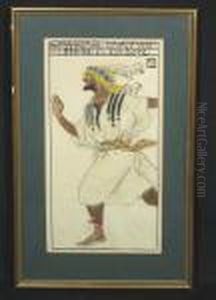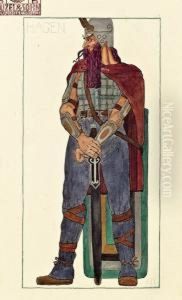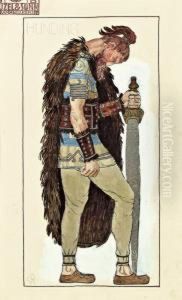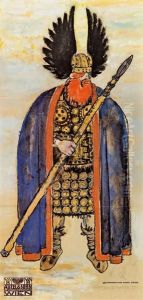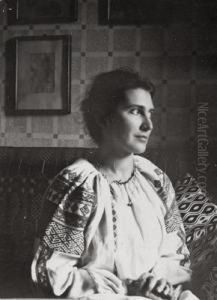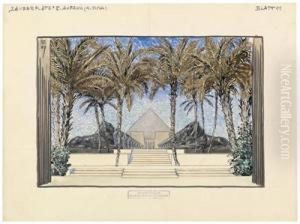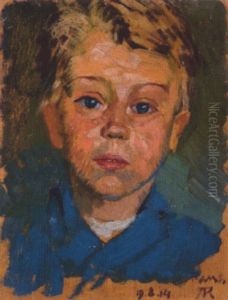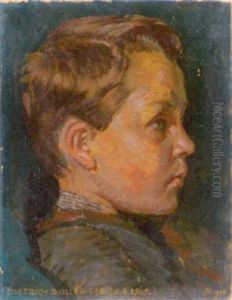Alfred Roller Paintings
Alfred Roller was an Austrian painter, graphic designer, and stage designer, born on October 2, 1864, in Brno, which was then part of the Austro-Hungarian Empire and is now in the Czech Republic. He played a significant role in the development of modernist aesthetics in the late 19th and early 20th centuries, especially within the context of the Vienna Secession movement, a group that sought to break away from the traditional academic art establishment. Roller's work and vision were instrumental in shaping the visual language of modernism in Austria and beyond. He was known for his innovative approach to graphic design, typography, and stage design, blending elements of Art Nouveau with a forward-looking modernist sensibility.
After studying at the Academy of Fine Arts Vienna, Roller became a key figure in the Vienna Secession, working closely with other notable artists such as Gustav Klimt and Josef Hoffmann. His work during this period was marked by a departure from naturalism, embracing instead a more stylized and decorative approach. Roller's contribution to the field of stage design is particularly noteworthy. In 1903, he began his association with the Vienna State Opera, where he collaborated with the composer and conductor Gustav Mahler. Together, they revolutionized opera production, introducing innovative concepts such as the use of symbolic rather than realistic scenery and the integration of all aspects of production design to create a cohesive visual and auditory experience.
In addition to his stage work, Roller was a prolific graphic artist, creating posters, illustrations, and other graphic materials that reflected his unique stylistic approach. His designs often featured bold uses of color, dynamic compositions, and a distinctive fluidity, characteristics that became hallmarks of the Secessionist style. Roller's influence extended into his teaching at the University of Applied Arts Vienna, where he nurtured the next generation of artists and designers, imparting his vision of an art that was both aesthetically pleasing and socially relevant.
Alfred Roller's legacy is that of a visionary who blurred the boundaries between different art forms, seeking to create a total work of art that integrated painting, graphic design, and stagecraft. His contributions to the Vienna Secession and his innovative work in opera production left an indelible mark on the art and culture of his time. Roller passed away on June 21, 1935, in Vienna, leaving behind a body of work that continues to be celebrated for its creativity and its impact on the evolution of modernist design and stagecraft.
